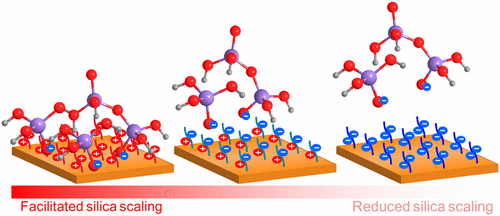
Researchers in the Elimelech lab continue to pioneer advances in membrane filtration technologies. In this paper, postdoc Tiezheng Tong and colleagues demonstrate the importance of membrane surface chemistry in driving and predicting fouling due to silica scale. This work has just been published in Environmental Science & Technology.
Relating Silicsa Scaling in Reverse Osmosis to Membrane Surface Properties
Tiezheng Tong, Song Zhao, Chanhee Boo, Sara M. Hashmi, and Menachem Elimelech
Abstract:
We investigated the relationship between membrane surface properties and silica scaling in reverse osmosis (RO). The effects of membrane hydrophilicity, free energy for heterogeneous nucleation, and surface charge on silica scaling were examined by comparing thin-film composite polyamide membranes grafted with a variety of polymers. Results show that the rate of silica scaling was independent of both membrane hydrophilicity and free energy for heterogeneous nucleation. In contrast, membrane surface charge demonstrated a strong correlation with the extent of silica scaling (R2 > 0.95, p < 0.001). Positively charged membranes significantly facilitated silica scaling, whereas a more negative membrane surface charge led to reduced scaling. This observation suggests that deposition of negatively charged silica species on the membrane surface plays a critical role in silica scale formation. Our findings provide fundamental insights into the mechanisms governing silica scaling in reverse osmosis and highlight the potential of membrane surface modification as a strategy to reduce silica scaling.